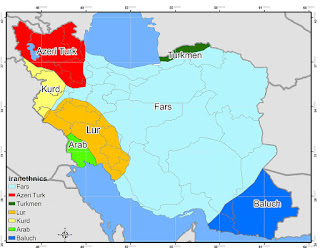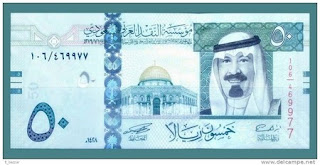Commercial terms call into question China’s win-win Belt and Road initiative
Source: YouTube
By James M. Dorsey
In a rare challenging of Chinese commercial terms that
underlie the country’s ambitious Belt and Road initiative, Pakistan
and Nepal have withdrawn from two dam-building deals. The withdrawal
coincides with mounting questions in Pakistan, a crown jewel in Chinese
geo-strategic ambition, about what some see as a neo-colonial
effort to extract the country’s resources.
The withdrawals and questioning call into question China’s
economics-centred approach to geopolitics based on the long-standing win-win
principle of Chinese policy, the notion that all parties benefit from Chinese
investment and largesse.
Critics have charged that the principle boils down to China
wins twice, a notion that is supported by Chinese plans for Pakistan’s agricultural sector;
the extraction of Pakistani
onyx, granite, and black gold marble; the disagreement over the dams; and
the debt traps that forced countries like Sri
Lanka to surrender control of key assets.
Pakistan and Nepal announced their withdrawals last week in separate
statements. Pakistani Water and Power Development Authority chairman Muzammil
Hussain charged that “Chinese conditions for financing the Diamer-Bhasha
Dam were not doable and against our interests.” China and Pakistan were also at
odds over ownership of the $14 billion, 4,500 megawatts (MW)-hydropower project
on the Indus River in the country’s problematic region of Gilgit-Baltistan near
disputed Kashmir.
Nepal’s Deputy Prime Minister and Energy Minister Kamal
Thapa announced his government’s decision to scrap a US$2.5 billion deal
with China’s Gezhouba Group to build a hydroelectric project on the Budhi
Gandaki River in the west of the country two days before the Pakistani decision.
With India’s National Hydroelectric Power Corporation (NHPC) waiting in the
wings and expectations that the incumbent, Nepali Congress (NC) will be
returned to power in elections
scheduled for November 26 and December 7, the project plays into Eurasia’s
Great Game for regional influence.
The Diamer-Bhasha project was intended to be part of the
Chine Pakistan Economic Corridor (CPEC), a key node on the Belt and Road, that
with planned investments into infrastructure, including the port of Gwadar in
the volatile province of Balochistan; energy, telecommunications and information
technology, of more than $50 billion, constitutes China’s largest financial
commitment to any one country.
The Pakistani withdrawal takes on added significance because
it was included in CPEC after the government had failed to secure funding from
international institutions like the World Bank and the Asian Development Bank
(ADB) because of Indian objections that it was in disputed territory. The
government has broken ground on the project five times in the past 15 years.
Mr. Hussain said that the government now has a five-year funding plan for the
project that would be completed in 2026.
Chinese analysts suggest that the Pakistani and Nepalese
withdrawals could set a precedent.
“It will not be a big surprise if similar problems happen in
China’s future overseas projects. And that would not change the big picture. There
is a common misinterpretation internationally that the Belt and Road is
something China would want to push forwards at all cost. But in fact, all
projects are commercial so they have to be justifiable economically, and agreed
mutually,” said Zhao
Gancheng, a South Asia expert at the Shanghai Institute for International
Studies.
China is likely to encounter greater resistance not only on
its financial terms, but also regarding assessments of what economic benefit investment
target countries can expect.
A State Bank of Pakistan study
concluded that exports of marble to China, Pakistan’s foremost rough-hewn,
freshly-excavated marble export market, and the re-export to Pakistan of
Pakistani semi-processed marble was “hurting Pakistan’s marble industry to a
significant extent.”
Pakistani marble exporter and retailer Shakil Khan told Asia
Times that “the Chinese buyers go for the square slabs, while the local
quarrymen tend to excavate oval-shaped blocks which reduce to smaller bits” and
are only of interest to the local Pakistani handicrafts and tile market. The
Chinese approach discriminates against mines with cracked marble.
“The Chinese pick only the rare and quality stuff like onyx,
black gold marble and high-quality granite from the market. Local processing
units don’t have the high-tech processing equipment here to treat these costly
marble products,” added Zahid
Shinwari, president of the Sarhad Chamber of Commerce & Industry (SCCI),
in Peshawar.
The Pakistani marble industry’s experience strokes with the
overall suggestion of the leaked
long-term plan for CPEC that projects risks of economic domination,
the creation of a surveillance state, and would allow China to shape Pakistan’s
media landscape. It projected an approach that has already sparked popular
resistance and setbacks in countries and regions such as Sri Lanka, Myanmar,
and Balochistan.
The plan envisioned Chinese state-owned companies leasing
thousands of hectares of Pakistani agricultural land to set up “demonstration
projects” in areas ranging from seed varieties to irrigation technology. The Chinese
companies would be offered “free capital and loans” from various Chinese
ministries as well as the China Development Bank.
Effectively turning Pakistan into a raw materials supplier
rather than an added-value producer, a prerequisite for a sustainable textiles
industry, the plan sees the Xinjiang Production and Construction Corps in China’s
troubled north-western province of Xinjiang, as the vehicle for the
introduction of mechanization as well as new technologies in Pakistani
livestock breeding, development of hybrid varieties, and precision irrigation.
Added value would be produced in Xinjiang as part of China’s bid to quell
ethnic unrest among the Uighur population.
The plan envisaged the Pakistani textile sector as a
supplier of materials such as yarn and coarse cloth to textile manufacturers in
Xinjiang. “China can make the most of the Pakistani market in cheap raw
materials to develop the textiles & garments industry and help soak up
surplus labour forces in (Xinjiang’s) Kashgar,” the plan said. Chinese
companies would be offered preferential treatment regarding “land, tax,
logistics and services” as well as “enterprise income tax, tariff reduction and
exemption and sales tax rate” incentives.
Pakistan and Nepal’s withdrawal from the dam projects
suggests that for China to secure economic dominance in Eurasia, it will have
to ensure that win-win amounts to equitable terms and distribution of benefits
among those that need the investment.
"China needs to nurture better understanding of its
intentions and visions…to prevent unnecessary suspicions about its geopolitical
ambition," The
Jakarta Post said earlier this year in an editorial that acknowledged
that “we badly need the huge infrastructure spending that China is bringing.”
Dr.
James M. Dorsey is a senior fellow at the S. Rajaratnam School of International
Studies, co-director of the University of Würzburg’s Institute for Fan Culture,
and co-host of the New Books in
Middle Eastern Studies podcast. James is the author of The Turbulent World of Middle East Soccer blog, a book with the same title as well
as Comparative
Political Transitions between Southeast Asia and the Middle East and North
Africa,
co-authored with Dr. Teresita Cruz-Del Rosario and Shifting Sands, Essays on Sports and
Politics in the Middle East and North Africa




I agree that China has challenges ahead. China embarked on a bold agenda roughly four years ago that they say will play a major role in shaping the world. The "One Belt, One Road initiative" also known as OROB is an all-encompassing and confusing "work in progress" that will reshape world trade and the relationships China has with many countries. The OROB strategy holds both huge potential benefits and risk for China. These are explored in the article below.
ReplyDeletehttp://brucewilds.blogspot.com/2018/02/chinas-bold-one-belt-one-road-agenda.html